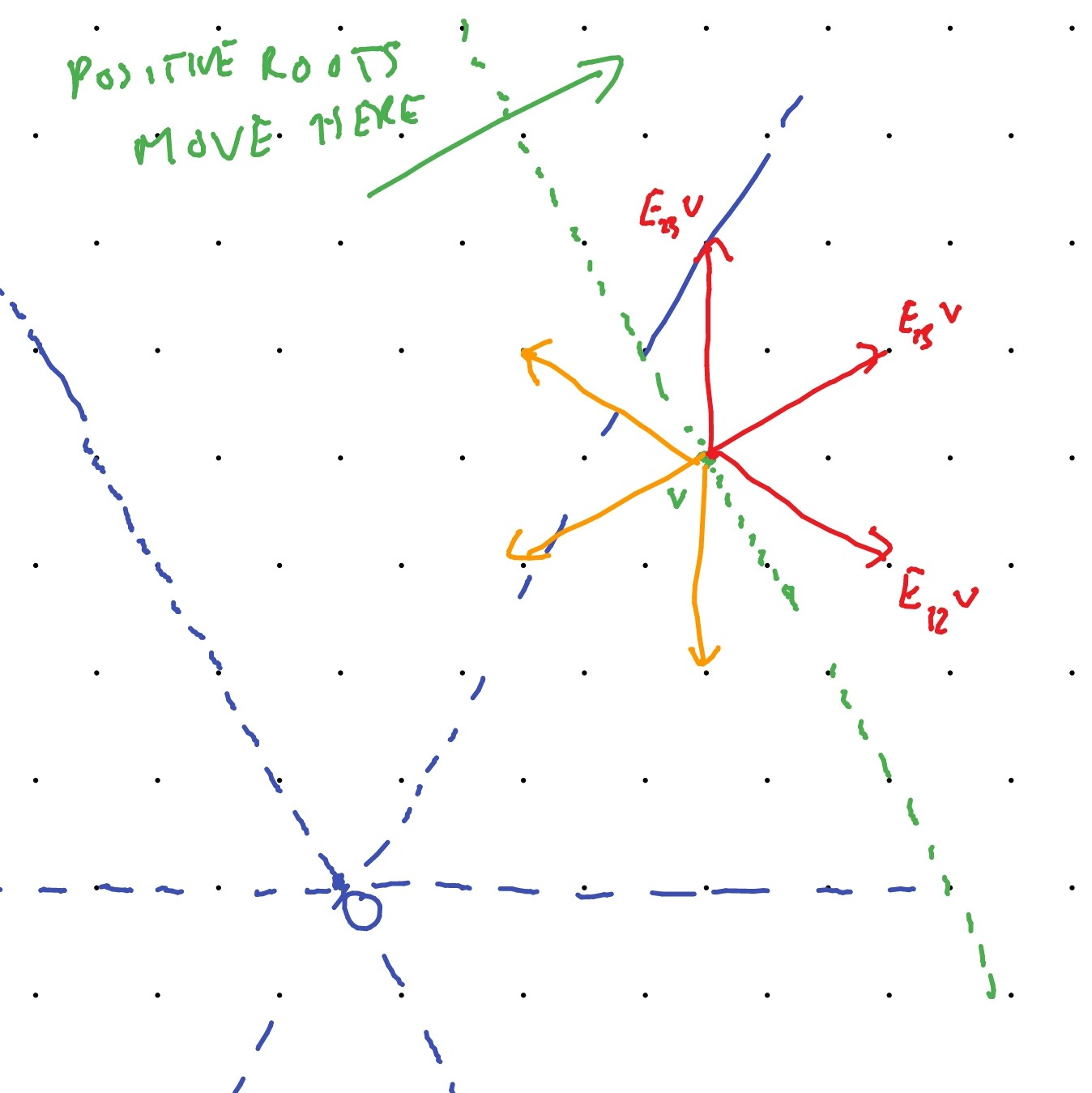7.6 Highest weights
We now develop the theory of highest weights, analogous to that for . We first carry out the fundamental weight calculation (the analogue of Lemma 6.10).
Lemma 7.18.
(Fundamental Weight Calculation). Let be a representation of and let be a weight vector with weight . Let be a root and let be a root vector. Then
Thus we obtain a map
Proof.
Let . Then
Example 7.19.
We work this out for the adjoint representation. Recall that, for , we have the root with root vector . The above calculation shows that, if and are roots, then . Here are some examples:
-
•
If , , then is not a root so . Thus (which could also be checked directly).
-
•
If then we get
-
•
If , , then and we get
In fact, you can check that .
Exercise 7.20.
Let be a finite-dimensional irreducible representation of . Then the weights occurring in all differ by integral linear combinations of the roots of , that is, by integral linear combinations of .
With regard to the weight diagram, we observe that the ’positive’ root vectors , , move in the ’northeast’ direction while the ’negative’ root vectors move in the ’southwest’ direction (roughly speaking). See Figure 9.

Definition 7.21.
Let be a representation of . A highest weight vector in is a vector such that:
-
1.
is a weight vector; and
-
2.
.
The weight of is then a highest weight for .
Remark 7.22.
Since , it follows that a highest weight vector is also killed by . So it is killed by all the positive root vectors.
Example 7.23.
-
1.
The standard representation has highest weight with highest weight vector .
-
2.
The dual has highest weight with highest weight vector .
-
3.
The adjoint representation has highest weight with highest weight vector .
-
4.
The symmetric square has highest weight with highest weight vector .
Lemma 7.24.
Let be a finite-dimensional representation of . Then has a highest weight vector.
Proof.
For a weight , define . Of all the finitely many weights of , choose a weight such that is maximal.
Let be a weight vector with this weight. Then , if nonzero, has weight
and
This is not a weight of by maximality of . Thus . Similarly , if nonzero, has weight
and , so . ∎